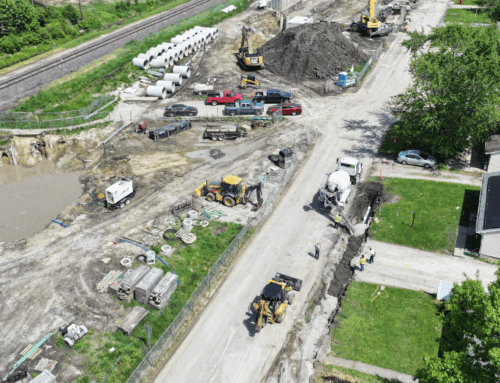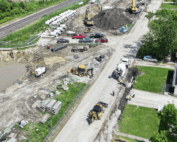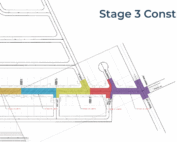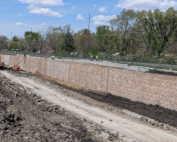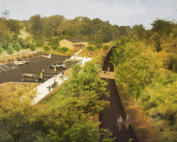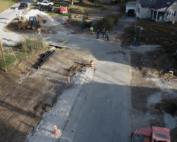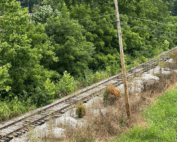The M-49 reconstruction in Camden, MI, presented a unique engineering challenge—designing a traffic management plan that accommodates both heavy truck traffic and Amish horse-drawn buggies.

Project Overview
The M-49 corridor runs through the Village of Camden in Hillsdale County, a small rural community near the Michigan-Indiana-Ohio border. Though the village is small, M-49 has become a significant truck route due to its proximity to I-90. At the same time, Camden is home to the largest Amish population in the county, making M-49 a vital passage for both modern freight and traditional horse-drawn buggies.
This Michigan Department of Transportation (MDOT) project involves a full roadway reconstruction from the north village limit to the south village limit, including drainage improvements, a new stormwater conveyance system, curb and gutter installations, sidewalks, bridge superstructure replacement, and scour countermeasures. The project also incorporates a temporary one-lane bridge during construction, managed by temporary traffic signals.
Clark Dietz’s Role
As a subconsultant to Benesch who performed the road and bridge design, Clark Dietz was responsible for the Maintenance of Traffic, Work Zone Mobility & Safety, Transportation Management Plan, Temporary Signal Design, and Non-Freeway Signing. One of the biggest challenges our team faced was ensuring safe and efficient traffic flow for all road users—trucks, passenger vehicles, and horse-drawn carriages—through the work zone.
The Engineering Challenge: Amish Traffic in a Modern Traffic Model

To regulate traffic effectively, three-phase signals were installed at intersections between side streets and M-49. These signals allow dedicated phases for northbound and southbound traffic on M-49, as well as for vehicles turning from side streets. This system improves safety, reduces congestion, and ensures smooth traffic flow, particularly in a work zone with diverse road users.
Our team used Synchro for traffic modeling to help assess the timing for these temporary signals. However, these signals had to accommodate all road user types including the Amish horse and buggy. Referencing the Ohio Department of Transportation’s guidelines, we were able to estimates horse and buggy speed at 5-8 mph. To accommodate these slower speeds, we adjusted signal phases, ensuring buggies had sufficient time to clear intersections safely. However, standard traffic modeling software like Synchro only accounts for vehicles with speeds as low as 10 mph—potentially twice the speed of a horse-drawn buggy. To overcome this, we modified driver behavior parameters within Synchro, classifying buggies as “cautious drivers” moving at half the typical minimum vehicle speed, allowing for more realistic signal timing adjustments.
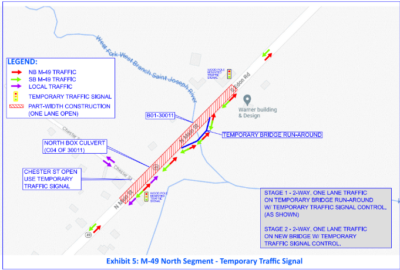
Another key consideration was traffic management for residents within the work zone who had limited detour options. Part-width closures were mitigated by city-only detours, ensuring local access while minimizing disruptions. The only planned county-road detour is during the brief closure of Bell/Camden Rd., keeping regional traffic impacts to a minimum while construction proceeds efficiently.
To prevent congestion caused by vehicles being unable to pass horse-drawn buggies, we also implemented specialized signage with clear messaging, such as: “All horse-drawn carriages must turn right.” This measure helps maintain traffic efficiency while prioritizing safety for all users.
Engineering Lessons and Industry Relevance
This project exemplifies the importance of adaptability in transportation engineering. Engineers frequently adapt industry-standard tools to real-world conditions, ensuring that often-overlooked vulnerable road users are accommodated. The ability to work within software limitations, such as adjusting Synchro to accommodate non-motorized users, highlights the creative problem-solving skills necessary in the field.
For those considering a career in transportation engineering, projects like this illustrate how engineers must balance technical constraints with community needs. Understanding how different vehicle types interact with traffic signals is essential for designing safe and efficient roadways.
Synchro Analysis and Traffic Modeling Team
Michelle Shumaker, PE, contributed to the Synchro analysis and worked alongside the team to fine-tune the traffic model, ensuring it accommodated diverse vehicle types. Michelle holds a Bachelor’s Degree in Engineering Arts from Michigan State University and a Master’s Degree in Civil Engineering and Transportation Systems Engineering from North Carolina State University. Based in our Lansing, MI office, Michelle found this project particularly interesting as it presented a unique challenge—developing a traffic model that balanced the needs of different road users, from high-speed freight traffic to slow-moving horse-drawn buggies.
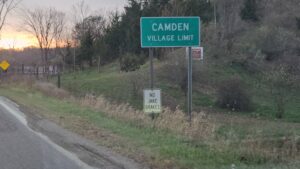
Looking Ahead
The M-49 reconstruction project is still in the design phase, with construction expected to be performed in sections during the 2026-2027 construction seasons. As engineers, we thrive on solving unique challenges, and this project is a testament to the ingenuity and problem-solving skills that define our profession.
For the Clark Dietz team, this project was an exciting opportunity to adapt modern engineering tools to accommodate the historical traditions of the local Amish community—ensuring that all users, from truck drivers to horse-drawn carriage operators, can navigate the roadway safely and efficiently.






